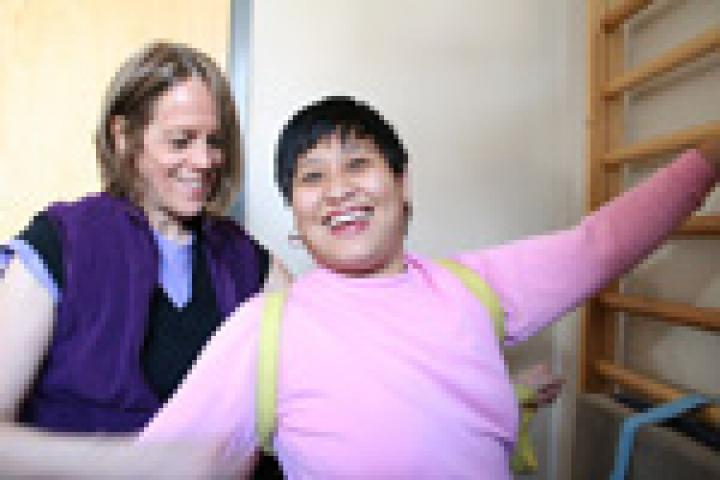Share

by Dalia Zwick, PT, Ph.D.
Yoga-based therapeutic positioning is a unique integrative approach to physical therapy for people with disabilities. In the last few years, people with physical disabilities, including spinal chord injury, cerebral palsy and multiple sclerosis, who have had therapeutic positioning techniques as part of their PT program have reported positive effects.
“I feel like this positioning and the support is like stacking my body in the right order, and I have energy to move and do what needs to be done at home," said Bob, a patient.
“I was afraid I was losing my walking ability. What I didn't understand is that just because my arms are not as badly affected as my legs I need to stretch them too and keep them moving," said Ingred, another patient.
Yoga-based therapeutic positioning, which “incorporates the principles of 1) improving the length-tension relationship of the accessory ventilatory muscles involved in that posture, 2) using gravity to assist the movement or to incorporate a passive stretch, and 3) using the natural coordination of the trunk/chest wall movement with inspiration and exhalation patterns to maximize movement.”¹ As Stephens & Lattimore write in their clinical report on positioning residential clients with multiple disabilities , “[e]ffective management of patients who have severe cerebral palsy or multiple handicaps require a comprehensive treatment plan….[p]ositioning that maintains symmetrical alignment is an accepted part of treatment.”²
The Program for People with Physical Disabilities at Premier HealthCare emphasizes:
· Reduction of tone, spasm and spasticity and an understanding of their influence on muscle and joint mobility
· Increased range of motion/soft tissue elongation via therapeutic positioning in supine, prone, kneeling, side-lying, sitting and when possible, standing
· Passive and active movements related to improvements and regaining at least one specifically identified functional Activity of Daily Living
· Address prevention of secondary conditions such as contractures, poor posture, and pain that can affect function.
· Symmetry via support and active instruction, which enhances awareness of body position by both the member and his/her caregiver
· Relaxation (facilitated through breathing instructions) which is designed to enhance effects of passive and active movements
For more information on this and other programs, please contact LINK at 212.273.6182.
¹ Massery, M. (1994). What’s Positioning Got to Do With It? Journal of Neurologic Physical Therapy, 18(3), 11-14.
² Stephens, T. E., & Lattimore, J. (1983). Prescriptive check list for positioning multihandicapped residential clients. A clinical report. Physical Therapy, 63(7), 1113-1115.
